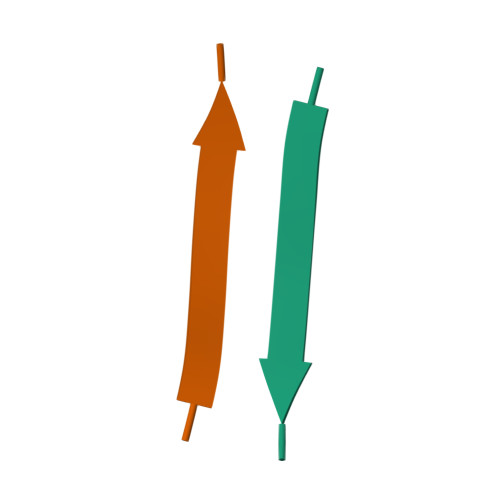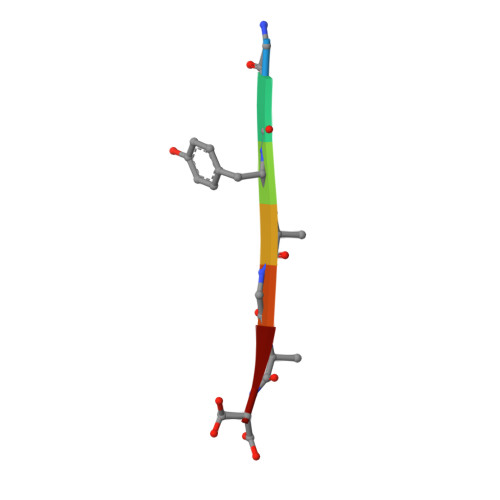Identifying amyloid-related diseases by mapping mutations in low-complexity protein domains to pathologies.
Murray, K.A., Hughes, M.P., Hu, C.J., Sawaya, M.R., Salwinski, L., Pan, H., French, S.W., Seidler, P.M., Eisenberg, D.S.(2022) Nat Struct Mol Biol 29: 529-536
- PubMed: 35637421
- DOI: https://doi.org/10.1038/s41594-022-00774-y
- Primary Citation of Related Structures:
7K3C, 7K3X, 7K3Y - PubMed Abstract:
Proteins including FUS, hnRNPA2, and TDP-43 reversibly aggregate into amyloid-like fibrils through interactions of their low-complexity domains (LCDs). Mutations in LCDs can promote irreversible amyloid aggregation and disease. We introduce a computational approach to identify mutations in LCDs of disease-associated proteins predicted to increase propensity for amyloid aggregation. We identify several disease-related mutations in the intermediate filament protein keratin-8 (KRT8). Atomic structures of wild-type and mutant KRT8 segments confirm the transition to a pleated strand capable of amyloid formation. Biochemical analysis reveals KRT8 forms amyloid aggregates, and the identified mutations promote aggregation. Aggregated KRT8 is found in Mallory-Denk bodies, observed in hepatocytes of livers with alcoholic steatohepatitis (ASH). We demonstrate that ethanol promotes KRT8 aggregation, and KRT8 amyloids co-crystallize with alcohol. Lastly, KRT8 aggregation can be seeded by liver extract from people with ASH, consistent with the amyloid nature of KRT8 aggregates and the classification of ASH as an amyloid-related condition.
Organizational Affiliation:
Departments of Chemistry and Biochemistry and Biological Chemistry, UCLA-DOE Institute, Molecular Biology Institute, and Howard Hughes Medical Institute, UCLA, Los Angeles, CA, USA.
















